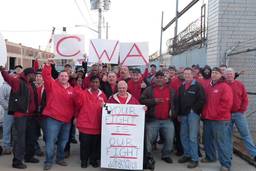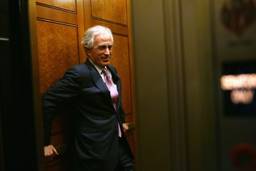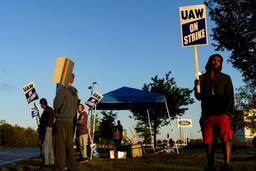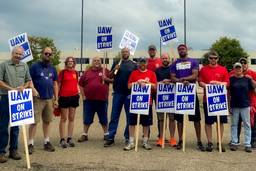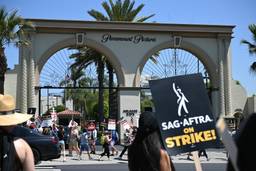WASHINGTON, D.C. — “Police need a raise! Police need a raise!”, shouted 400 protesters as police came to break up their invasion of Senate Minority Leader Mitch McConnell’s (R-Ky.) office yesterday. The protesters, members of National People’s Action, had invaded Sen. McConnell’s office demanding to meet with him regarding proposed GOP budget cuts to key social service programs.
The protesters held signs that said “We Do Not Have a Budget Crisis, but a Revenue Crisis” referring to the need to tax Wall Street to make up the budget shortfalls.
In many ways, the protests reminded me of the ongoing Wisconsin protests, where protesters essentially shut down a legislative body. Staffers of Sen. McConnell’s office fled to the hallways to escape the noise and commotion of the protestors. The NPA protest literally shut down the Senator’s office. However, unlike Wisconsin, the protesters were quickly forced to leave the Senate Building by police after only a mere 20 minutes of disruptive protests.
Invading a Senator’s office creates a big commotion and draws some media attention. But if the Senator can just call police and have the protesters dismissed, how much leverage does it create? While one-day protests are important statements, do they elevate an issue to the level of attention that a government cannot ignore the issues and is forced to negotiate the way protests in Madison (and other capital cities) have and mass protests during the Civil Rights Movement and the Great Depression did?
“Obviously, the key is to be able to escalate these things, by bringing people back to their home districts and getting them to do similar actions over many days” says Jordan Estevao, director of campaigns for National People’s Action
The invasion of McConnell’s office was part of a weeklong training in Washington, D.C. by National People’s Action, a coalition of community, faith-based, youth and labor-oriented groups. Their conference was jam-packed with in-your-face direct action — the type that really scares corporate CEOs and their political allies. Sunday, several hundred protests had surrounded the Georgetown home of Bank of America board member Charles Rossitti.
On Monday morning, before the afternoon invasion of Mitch McConnell’s office, 600 protesters sat in at a local D.C. branch of Bank of America shutting it down for over an hour (see video above). Then, 42 NPA protestors infiltrated a meeting of the State Attorney Generals where they were coordinating the terms of a massive settlement over foreclosure fraud.
Protesters demanded to meet with Iowa Attorney General Tom Miller, who is leading the settlement talks. They claimed that the rumors of a mere $20 billion settlement with no significant structural changes to the fraudulent practices of banks were not sufficient to solving the mortgage crisis. The protests were successful in getting Iowa Attorney General Tom Miller’s top deputy on this issue to come out and speak with the crowd about their concerns— small proof, for the protesters, that such aggressive direct actions can at least force politicians to come out and be forced to address their issues.
Watch the video:
“The reason why we are doing so many direct actions is so that when people go back to their community when they live, they don’t feel like some fringe minority for engaging in these things,” says National People’s Action Jordan Estevao. “People see themselves as leaders, and realize that direct action is something that a lot of people around the country are doing.”
As organizations think about what to do in the wake of the groundswell of energy from Wisconsin, they would be wise to look to groups like National People’s Action for direction. As I wrote at Alternet a few days ago, no amount of TV ads or slick media consultants caused the Wisconsin outpouring of support — it was pure grassroots energy and committed community leaders who encouraged others to take actions.
Investing in education and training for activists and organizers should be the top spending priority of any member of the labor or progressive movement. Only trained and confident activists can create the type of direct action that we saw in the 1930s and 1960s. That’s the type of action needed to really scare the economic and political elite of this country, and make significant change in the status quo.

I hope you found this article important. Before you leave, I want to ask you to consider supporting our work with a donation. In These Times needs readers like you to help sustain our mission. We don’t depend on—or want—corporate advertising or deep-pocketed billionaires to fund our journalism. We’re supported by you, the reader, so we can focus on covering the issues that matter most to the progressive movement without fear or compromise.
Our work isn’t hidden behind a paywall because of people like you who support our journalism. We want to keep it that way. If you value the work we do and the movements we cover, please consider donating to In These Times.


